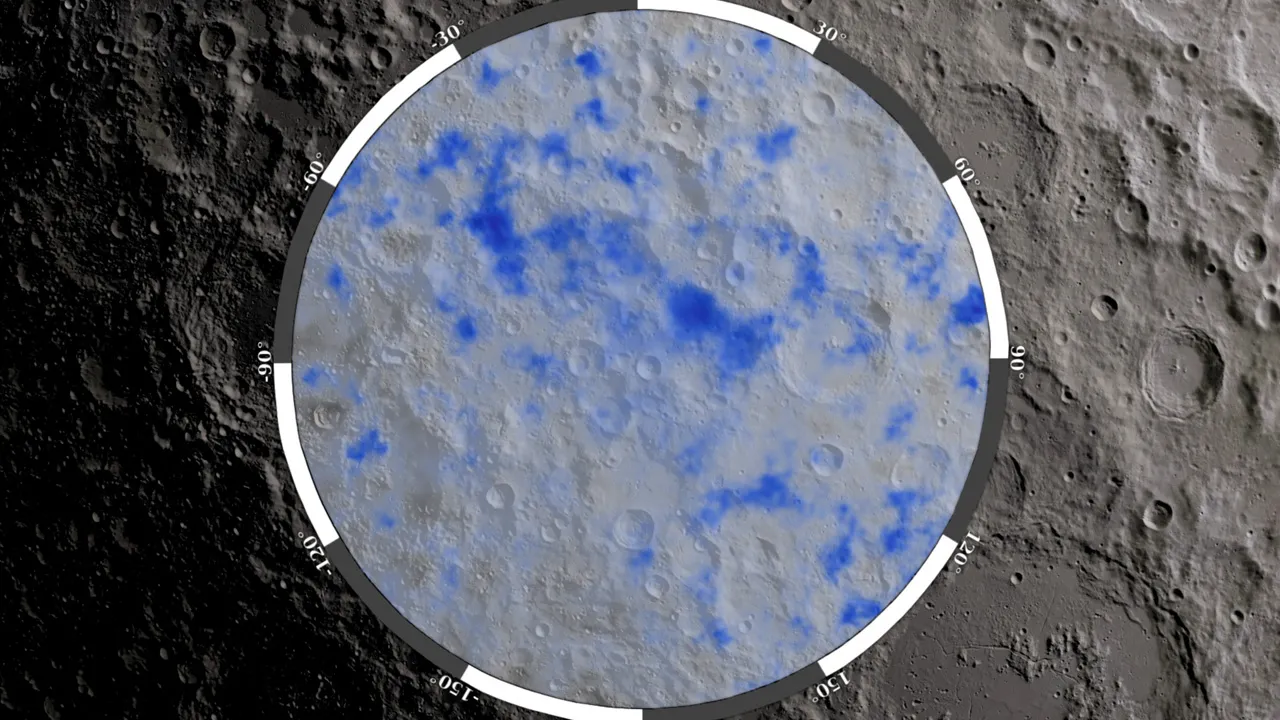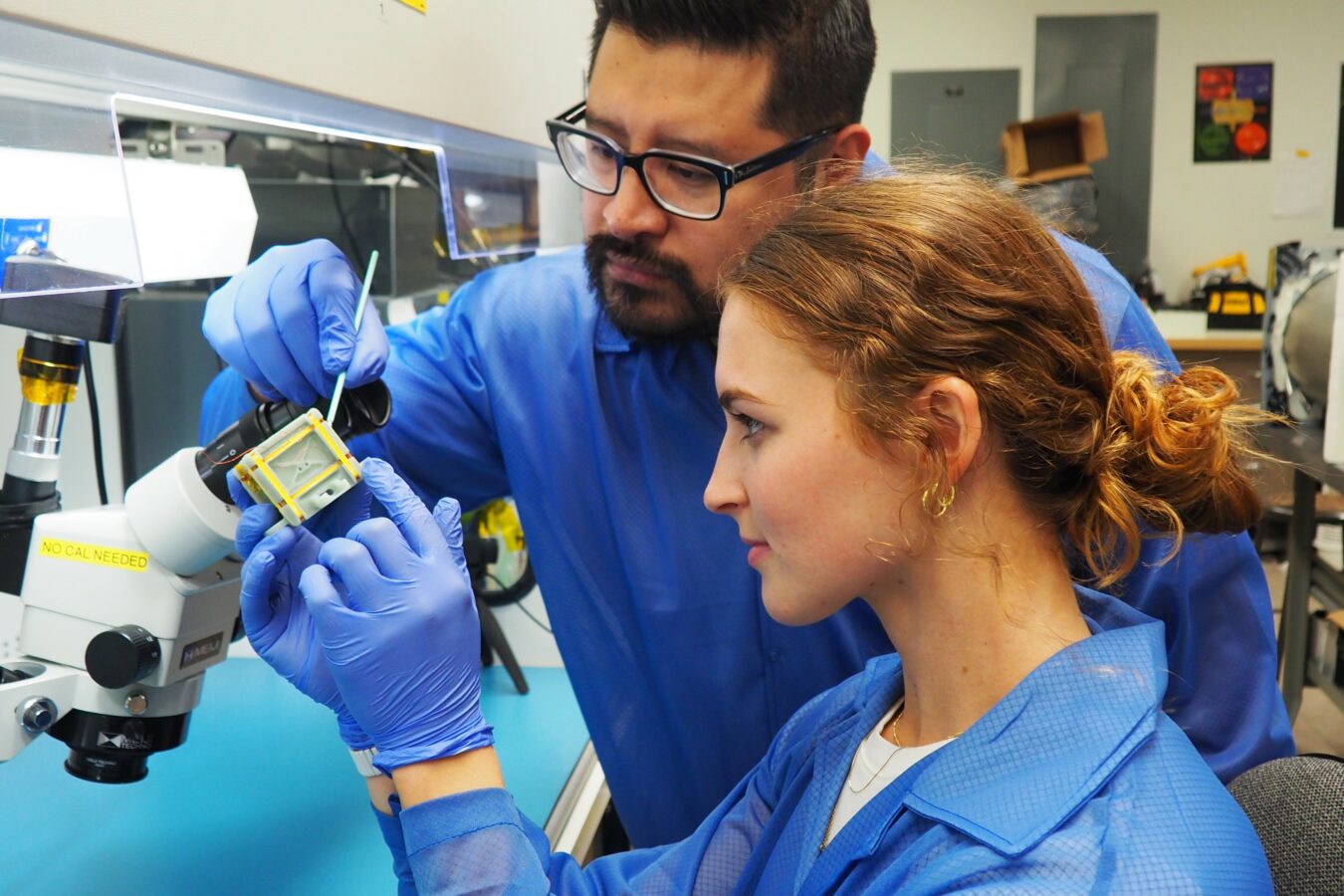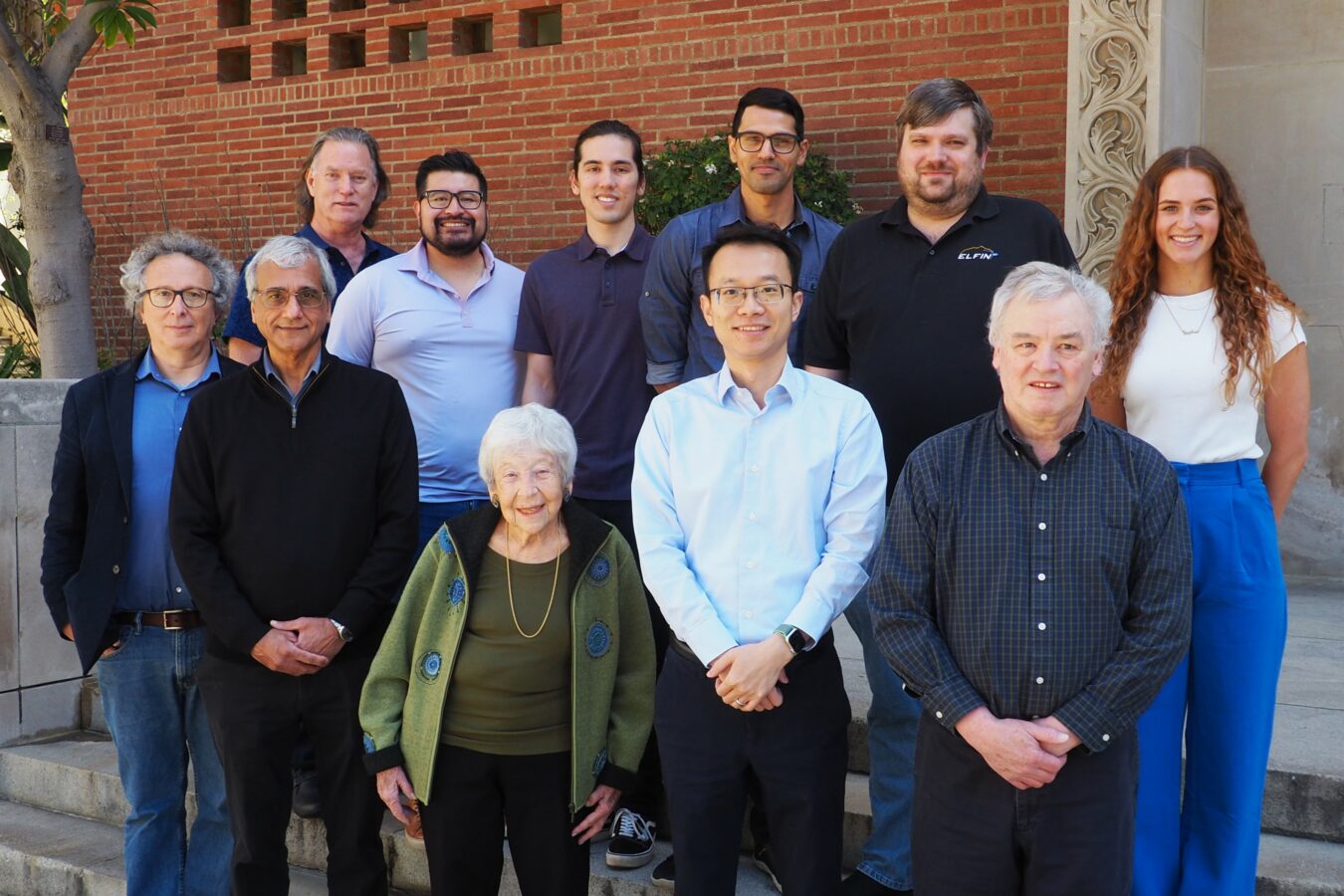Rita Aksenfeld | March 21, 2024
Key takeaways:
- Water is essential for lunar exploration, so scientists want to know how much there is and how it got there.
- UCLA has a long history of bringing together experts in diverse fields to study space and develop new technologies for the public and commercial space sectors.
- Prof. Hao Cao and the MAG lab at UCLA earned a DALI grant from NASA to develop new instrumentation for study of the locations and origin of lunar water.
Humanity is going back to the Moon. Water is crucial for life, so several key questions for future lunar expeditions revolve around lunar water: where is it located, how much is there, and how did it get there? Answers to these questions would inform us about the formation of the Earth-Moon system, which is a critical event that set the initial stage for the planet we all live on.
UCLA Earth, Planetary, and Space Sciences Professor Hao Cao and his team work on creating new technologies that measure magnetic fields to answer these questions. Different types of materials inside of a planet or moon would respond to magnetic field disturbances differently. Even deep beneath the surface, water bound in rocks would alter the slowly time-varying magnetic field enough that a sensitive magnetic field measuring device – a magnetometer on the Moon’s surface – could detect its presence. Magnetometers are a tried-and-true technology, and UCLA’s Magnetometer (MAG) lab has continuously developed and delivered these space-grade instruments to NASA since 1965.
However, when it comes to using a magnetometer to look for water on the moon, there are some challenges unique to the lunar surface. The primary challenge lunar instruments face is withstanding the extreme heat and cold of the lunar surface – from 250°F (121°C) during the lunar day to -369°F (-223°C) during the lunar night according to the Diviner instrument onboard the Lunar Reconnaissance Orbiter. “These huge temperature variations pose a great challenge for making highly accurate measurements,” explains Cao. “Just for the instrument to survive and operate on the surface of the moon during such huge temperature swings is challenging.”

To address these obstacles, Professor Cao works with a range of experts within UCLA. The continuity of training and expertise of members of the MAG lab make it uniquely suited to develop complex instrumentation for use by NASA and commercial space partners. As the deputy PI of the MAG lab, Professor Cao believes that it is “crucial to pass down the expertise from one generation of scientists and engineers to the next.” Similarly, his work contributes to UCLA’s SPACE Institute, which aims, in part, to “facilitate collaboration among the various scientists and engineers across campus in support of large, transformative projects,” according to Founding Faculty Director Professor Jacob Bortnik. Recently, NASA awarded Cao and his team a three-year, $3-million Development and Advancement of Lunar Instrumentation (DALI) grant to design, build, and test a magnetometer that is sensitive and durable enough to answer these questions and withstand the harsh lunar environment.
Cao’s solution for withstanding the challenging conditions on the lunar surface is to heat and cool the instrument to constant set points so the extreme temperature fluctuations don’t affect the data being collected. This would eliminate background noise from temperature variation. However, this active temperature control poses two new problems – background noise from the heater and limited energy availability. To solve both problems at once, Cao and his colleagues are designing what they call “magnetically clean heaters” and state-of-the-art thermal insulation solutions.
As Cao explains, the magnetically clean heaters work by restricting their own minimized background noise to “a completely different frequency than the signal we’re trying to measure so that there’s no interference between the two.” This innovative strategy would allow the magnetometer to run continuously during temperature changes so it could record more precise measurements than previously possible.

On the lunar surface, power is highly restricted, especially during the two-week lunar night when solar panels are not active, and instruments must rely on battery power. By using a magnetically clean heater instead of a conventional one, the heater could be housed within the magnetometer itself. This will “significantly drop the power requirements and make the entire system more compact,” states Cao.
“It’s something that has been considered but has never been implemented and tested on such a scale.”
Professor Hao Cao
Magnetically clean heaters are one of the key innovations that makes the rest of the instrumentation possible. This new technology has many scientific applications beyond magnetometers. It would allow for non-interfering temperature control of many types of experiments in fields as diverse as environmental science and materials chemistry. By harnessing the technology and expertise developed over decades of space exploration, Cao and UCLA are developing more efficient new technologies for future scientific endeavors.
Members of the group that participated in this project include: Prof. Hao Cao, Dr. Krishan Khurana, Dr. Robert Strangeway, David Pierce (AVARA Magnetics), Ryan Caron, Ryan Seaton, Henry Gonzalez, Enrique Gurrola, Sophia Murphy.
Tags: Faculty News, Grants, space, space Institute
 Members and associates of the UCLA MAG Lab. Top row from left to right: David Pierce (AVARA Magnetics), Henry Gonzalez, Ryan Seaton, Enrique Gurrola, Ryan Caron, Sophia Murphy. Bottom row from left to right: Prof. Marco Velli, Dr. Krishan Khurana, Prof. Margaret Kivelson, Prof. Hao Cao, Dr. Robert Strangeway (Image credit: Penny Jennings)
Members and associates of the UCLA MAG Lab. Top row from left to right: David Pierce (AVARA Magnetics), Henry Gonzalez, Ryan Seaton, Enrique Gurrola, Ryan Caron, Sophia Murphy. Bottom row from left to right: Prof. Marco Velli, Dr. Krishan Khurana, Prof. Margaret Kivelson, Prof. Hao Cao, Dr. Robert Strangeway (Image credit: Penny Jennings)